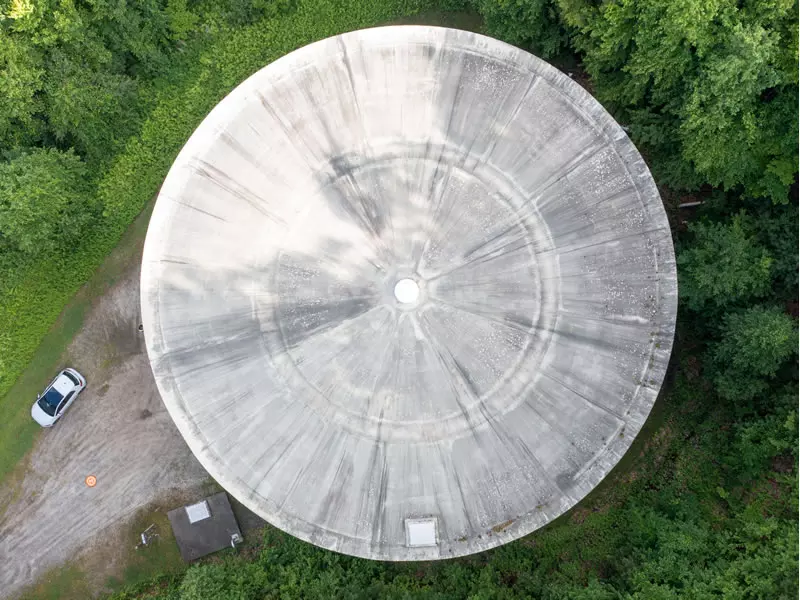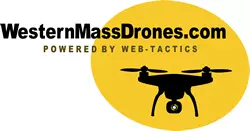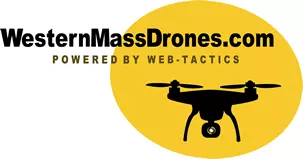Welcome to Western Mass Drones, your trusted partner for comprehensive drone water tank inspections. Our innovative Drone Inspection Service combines cutting-edge technology, skilled drone pilots, and industry expertise to deliver accurate, efficient, and cost-effective assessments for various types of water tanks.
Drone Water Tank Inspection Services
Water tanks are crucial in maintaining a safe and reliable water supply for communities, industries, and agricultural operations, so regular inspections are essential to ensure their structural integrity, cleanliness, and overall functionality. Our inspection services offer a modern solution to a traditionally time-consuming and labor-intensive process using advanced drones equipped with high-resolution cameras and sensors to thoroughly inspect water tanks inside and out, detecting any potential issues or areas of concern.
Benefit of Drones for Water Tank Inspections

There are numerous advantages to using drones for water tank inspections, some of which include the following:
-
Enhanced Safety: Drones eliminate the need for inspectors to physically climb water tanks or use scaffolding, significantly reducing the risk of accidents and improving overall safety during an inspection.
-
Cost and Time Efficiency: Drone inspections are completed much more quickly than traditional methods, resulting in less downtime for your water tank and considerable cost savings.
-
Minimal Disruption: With our non-intrusive drone inspection process, there is little to no disruption to your water supply or daily operations.
-
High-Quality Imagery: Our drones capture high-resolution images and video footage, allowing for a detailed analysis of your water tank's condition and facilitating early detection of any issues or maintenance needs.
-
Comprehensive Reporting: Our team of experts thoroughly analyzes the inspection data, providing a detailed report that includes findings, recommendations, and potential solutions.
Why Choose Western Mass Drones for Your Next Water Tank Inspection?
At Western Mass Drones, our goal is to help you maintain the safety and longevity of your water storage infrastructure while saving you time and resources. But there are other reasons city & local governments choose to work with us:
a. Expertise and experience in the industry:
Our team has years of experience in the drone industry, specifically conducting water tank inspections. Our extensive knowledge and understanding of water tank structures and technical know-how make us the ideal choice for your inspection needs.
b. Certified and trained drone pilots:
All our drone pilots are FAA Part 107 certified and undergo continuous training to stay up-to-date with the latest techniques and technologies. Their dedication to excellence ensures the highest professionalism and quality during each inspection.
c. Advanced equipment and technology:
We use state-of-the-art drones with high-resolution cameras to provide comprehensive and accurate inspections. Our drones can access hard-to-reach areas and collect valuable data, enabling us to identify potential issues with your water tank before they become costly problems.
d. Compliance with local and federal regulations:
We prioritize safety and compliance with all local and federal regulations. Our team stays informed about the latest rules and guidelines, and we adhere to strict operational procedures to ensure our services are safe and legally compliant.

Drone Water Tank Inspection Process
What follows is an expanded description of the Drone Water Tank Inspection Process:
a. Initial consultation and site assessment:
During the initial consultation, our team will discuss your specific needs, assess the project's scope, and gather essential information about the water tank to be inspected. The site assessment involves a visit to the location to understand better the site's layout, accessibility, and any potential hazards or obstacles that may affect the drone inspection process.
b. Flight planning and risk assessment:
With the information gathered during the initial consultation and site assessment, our team will develop a detailed flight plan for the drone inspection. This plan will include the flight path, altitude, and safety precautions. A comprehensive risk assessment identifies and mitigates potential hazards, ensuring our team's and your infrastructure's safety.
c. Execution of the inspection
- Visual inspection of the exterior
During the exterior inspection, our drones will capture high-resolution images and videos of the water tank's outer surfaces, including the roof, walls, and supporting structures. This process enables our team to identify any signs of corrosion, leaks, or structural damage that may require further attention.
- Interior inspection (if applicable)
If the interior of the water tank can be safely accessed, our drones will also perform an interior inspection. The drones will capture detailed images and videos of the tank's inner surfaces, identifying potential issues such as cracks, leaks, or sediment buildup.
d. Detailed inspection report with findings and recommendations
Upon completing the data analysis, we will provide a comprehensive inspection report detailing our findings. This report will include high-resolution images, descriptions of any identified issues, and recommendations for maintenance or repairs. This information will enable you to make informed decisions about the upkeep of your water tank and ensure its optimal performance and longevity.
Use Cases
City of Easthampton Water Tank Inspection
Frequently Asked Questions
What are drone water tank inspections?
Drone water tank inspections involve using unmanned aerial vehicles (UAVs) equipped with high-resolution cameras and sensors to inspect the exterior and interior (if applicable) of water tanks. These inspections help identify potential leaks, corrosion, and structural damage.
How do drone inspections differ from traditional water tank inspections?
Traditional water tank inspections typically require manual inspections by personnel using ladders, scaffolding, or rope access, which can be time-consuming, expensive and pose safety risks. Drone inspections offer a safer, more efficient, cost-effective alternative by capturing high-resolution imagery and accurate data without manual intervention.
Are drone water tank inspections compliant with regulations?
Yes, our drone water tank inspections comply with local and federal regulations. Our certified drone pilots strictly follow safety guidelines and adhere to established procedures to ensure a safe and efficient inspection process.
How long does a drone water tank inspection take?
The duration of a drone water tank inspection depends on the size and complexity of the tank. However, drone inspections are typically faster than traditional methods, often taking only a few hours to complete.
What type of equipment do you use for drone water tank inspections?
We use advanced drones equipped with high-resolution cameras and other specialized sensors to capture detailed imagery and accurate data during inspection.
How will I receive the results of the drone water tank inspection?
After the inspection, our team will analyze the collected data and generate a detailed report outlining our findings, including high-resolution imagery, identified issues, and recommendations for maintenance or repairs.
How often should I have my water tank inspected?
The frequency of water tank inspections may vary depending on local regulations and the tank's age, material, and condition. Generally, it is recommended to have your water tank inspected every 3-5 years or as required by local guidelines.
Can drones inspect the interior of water tanks?
Yes, drones can inspect the interior of water tanks if the tank design and safety conditions permit. In such cases, specialized drones equipped with collision avoidance technology and adequate lighting are used to navigate and inspect the tank's interior.

